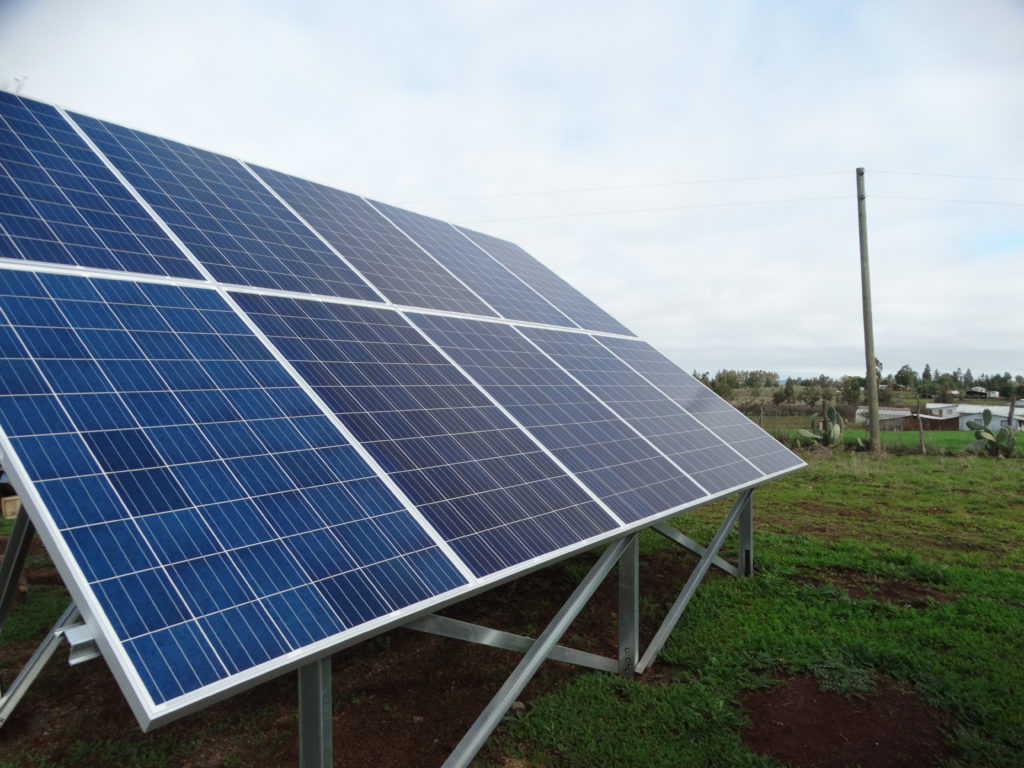From pv magazine España
A research article by Italian, Spanish and Portuguese scientists, published in the magazine Elsevier and titled, “Energy and environmental performances of hybrid photovoltaic irrigation systems in Mediterranean intensive and super-intensive olive orchards”, analyzes the energy and environmental expenditure of two hybrid PV irrigation systems large-scale commercial power plants (HPVIS), installed in intensive and super-intensive Mediterranean olive groves.
Over the past decades, intensive or super-intensive olive plantations have seen spectacular growth. Although it is a traditionally rain fed crop, maintained in the plantations where the most valued oil in the world are produced by the EVOOWR (the World Ranking of Extra Virgin Olive Oils), there are places where, due to the price increase of the oil produced with rain-fed olives, around 18% of the total area is devoted to irrigated olive cultivation.
This conversion increases the production of olives considerably, as well as that of the energy that is needed for this cultivation.
The data of the hybrid PV solutions are compared the electrical grid and with diesel generators, while a comparison of the environmental benefits of HPVIS with conventional energy sources is also established.
Energy consumption and the environmental footprint were evaluated through the recovery times of energy and carbon (EPBT and CPBT). The results show EPBT of 1.98 and 4.58 years in Morocco and a CPBT of 1.86 and 9.16 years for HPVIS in Portugal. In addition, HPVIS achieved low emission rates, corresponding to 48 and 103 g of CO2e per kWh generated.
The consumption of grid electricity and diesel fuel was also analyzed, before and after the implementation of the HPVIS systems. The results obtained show a saving of fossil energy of 67% for the Moroccan farm and 41% for the Portuguese.
According to the paper, hybridization is the only cost-effective alternative for PV applications when a plantation requires irrigation in hours when the sun does not shine. Therefore, analyzing and comparing the environmental impact of photovoltaic and diesel hybridization can be very useful for the design and improvement of this type of plantations.
Finally, the application of HPVIS to olive groves and the comparison of environmental benefits with other conventional energy sources and irrigation techniques also represents a new valuable contribution to the existing literature in the field.
Irrigation with solar is widespread in Latin American countries. In an international forum held in Rome in April, the Food and Agriculture Organization of the United Nations presented a World Report in which it encouraged the adoption of solar irrigation systems.
“The rapid expansion of increasingly affordable solar energy irrigation offers viable solutions that span the links between water, energy and food, offering a great opportunity for small-scale farmers to improve their livelihoods, economic prosperity and security,” said Deputy Director General of FAO, Helena Semedo.
The FAO also presented online tools on solar-powered irrigation systems, developed jointly with the German International Cooperation Agency (GIZ) and designed to provide practical guidance to end users, policy makers and donors.
This content is protected by copyright and may not be reused. If you want to cooperate with us and would like to reuse some of our content, please contact: editors@pv-magazine.com.



Why does irrigation need to be round-the-clock?
Olive oil labelling needs a new tag for 100% rain-fed. The general effect of intensive horticulture is to drive up yields at the expense of taste, as illustrated by the cardboard tomatoes grown under plastic on the desert plain round El Ejido west of Almeria.